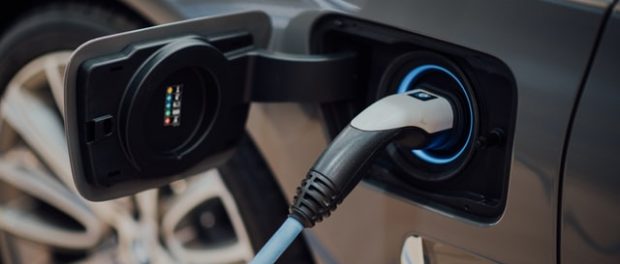Mobile connectivity will be integral to EV charge point payment models in the next generation of smart buildings

“Investments in behind-the-meter assets such as bi-directional EV charging stations and other smart building technologies will only generate returns if there is cellular connectivity to enable payments,” says Colin Abrey of Nextivity
Thanks to advances in distributed energy sources and smart metering technology, the concept of the national grid is being redefined. What’s more, with energy generation now possible at property level via solar panels, and with more applications utilising said energy as the world goes digital, commercial mixed-use buildings are perfectly poised to play a crucial role in the renewable energy ecosystem.
More interestingly though, this redefinition is presenting facilities managers with an exciting opportunity to rethink their energy management strategies and consider how they might profit financially from the energy their very buildings are generating. The rollout of electric vehicles (EVs) and the energy storage infrastructure that supports them could be the silver bullet needed to make this revenue-generating opportunity plausible, particularly as the Government has recently pledged to support the rollout of 300,000 public charge points as a minimum by 2030.
Although EVs are one level just another mode of transport along with buses, trains, trams, and bicycles, when you consider the bigger picture, these avant-garde vehicles are nothing more than giant batteries on wheels continually moving power from one location to another. However, when they are stationary, they need to be recharged and principal plug-in points, apart from residential dwellings, will be the workplace/supermarket/shopping centres/train station carparks.
Seamless mobile connectivity is central to person not present transactions
Whilst introducing EV charging stations and power storage facilities to any commercial property offers an easy means for facilities managers to leverage their “mini-grid” infrastructure to generate a supplementary revenue stream, a couple of baseline factors need to be addressed first. These are:
- The non-standardisation of payment options
- The lack of reliable mobile phone signal for payment authentication and validation
There are currently 30 plus charging networks across the UK and very few of their associated charging stations accept card payments unless they are network specific. Instead, EV charge point payment processes are reliant on the public downloading an App, or creating an account so payment can be made in advance, with both options requiring internet access. Not only do these payment methods pose connectivity challenges, particularly in underground locations due to lack of 4G coverage in the first place, until the different networks standardise on payment processes, consumers could be obliged to acquire up to 30 different Apps or cards, depending on where they are travelling to.
Apart from needing an internet connection for operability purposes, these different payment methods must also incorporate one-time authorisation code (OTAC) capabilities to meet latest PSD 2 rules pertaining to cardholder not present transactions. Said codes are dynamically created and delivered via SMS or MMS for user verification purposes and this requires cellular connectivity.
No mobile coverage could result in expensive white elephants
Unless this is taken into account at the implementation phase, facilities managers run the risk of investing in expensive white elephants because the carparks where the EV charge points will be installed are likely to be below street level with no mobile coverage. Having a strong 4G signal above ground can be very hit and miss in busy urban environments because of line-of-sight issues and physical obstructions such as tall buildings, trees etc which impact mobile signal strength. The situation immediately deteriorates below ground because building materials like glass, steel, reinforced concrete are the ultimate mobile signal blockers.
Enterprise buildings will have the bandwidth and resource to commission a third-party to manage the rollout of an EV charge point infrastructure and associated connectivity and coverage requirements. In smaller properties, the facilities managers will be responsible for assuring mobile coverage, and the vast majority have limited expertise in this field.
“Without a reliable mobile network signal, EV charging business models and solutions can be problematic. A reliable mobile network signal is an integral part of capturing and transporting data for billing purposes”, says Kelly Tedesco, Managing Director of NG Bailey’s IT Services division. “Most recently, the UK Government introduced new legislation that makes the inclusion of EV charge points mandatory in all new building projects, as well as those undergoing major renovation, all part of its “electric vehicle revolution”. This means no commercial property owner can afford to be complacent about the future of EV and the solutions they may require.”
The outdoor mobile network must be accessible below street level
Facilities managers will need an easy and cost-effective means of taking the outdoor network into their underground carparks using supplementary equipment such as mobile signal boosters, not just to support EV charge point payments but to provide straightforward voice and data services that we all take for granted. Achieving reliable inbuilding mobile coverage is no longer an arduous task now that Ofcom has relaxed its mobile repeater rules. The only caveat is that any installed repeaters must satisfy Ofcom’s mobile repeater licence exemption specification pertaining to noise and interference and not many do. An example of a system that does satisfy all criteria is Cel-Fi by Nextivity
The drive to replace petrol/diesel vehicles with hybrid/electric alternatives are gaining momentum fast and so too is the rollout of the associated power and storage infrastructure.
Now is the time for facilities managers to take action and re-evaluate their underpinning comms infrastructure to ensure it’s up to the task in hand because mobile coverage isn’t just the enabler to online payments it’s integral to wider smart building technologies. Those that fail to do so could find themselves short of tenants.
